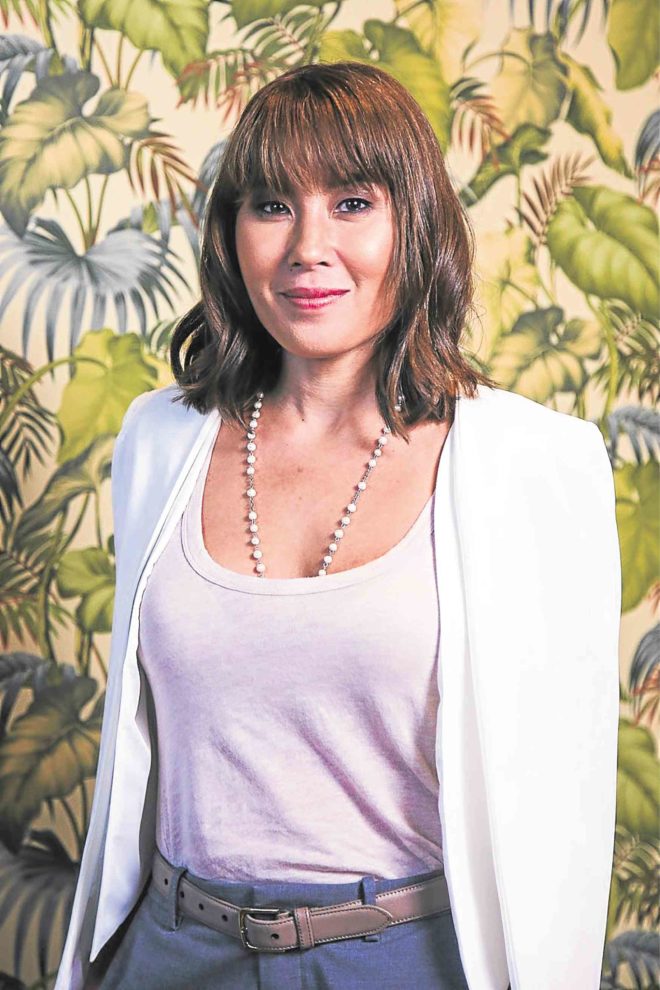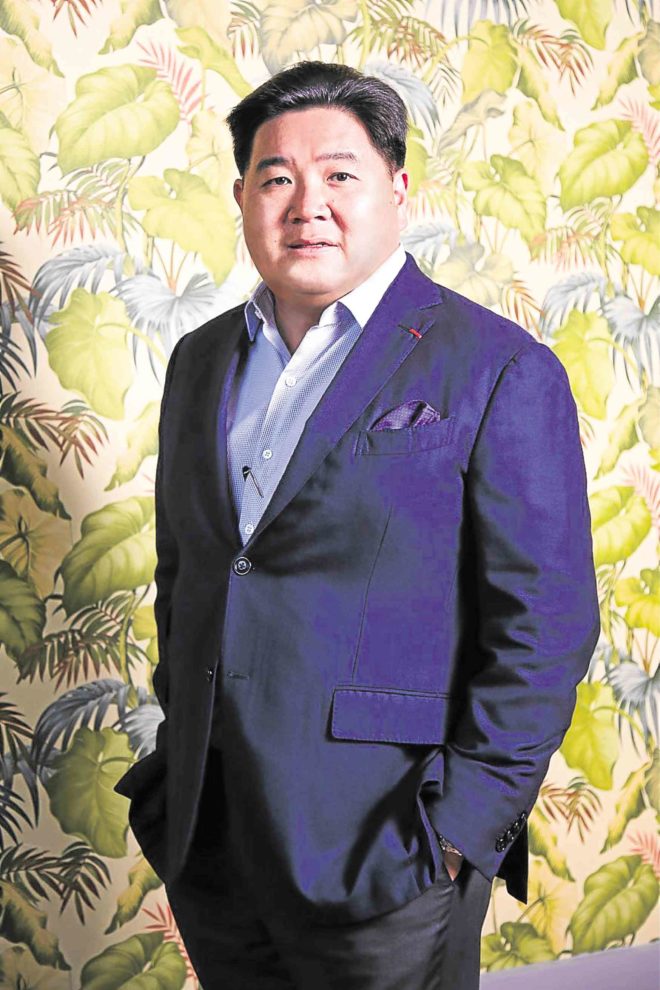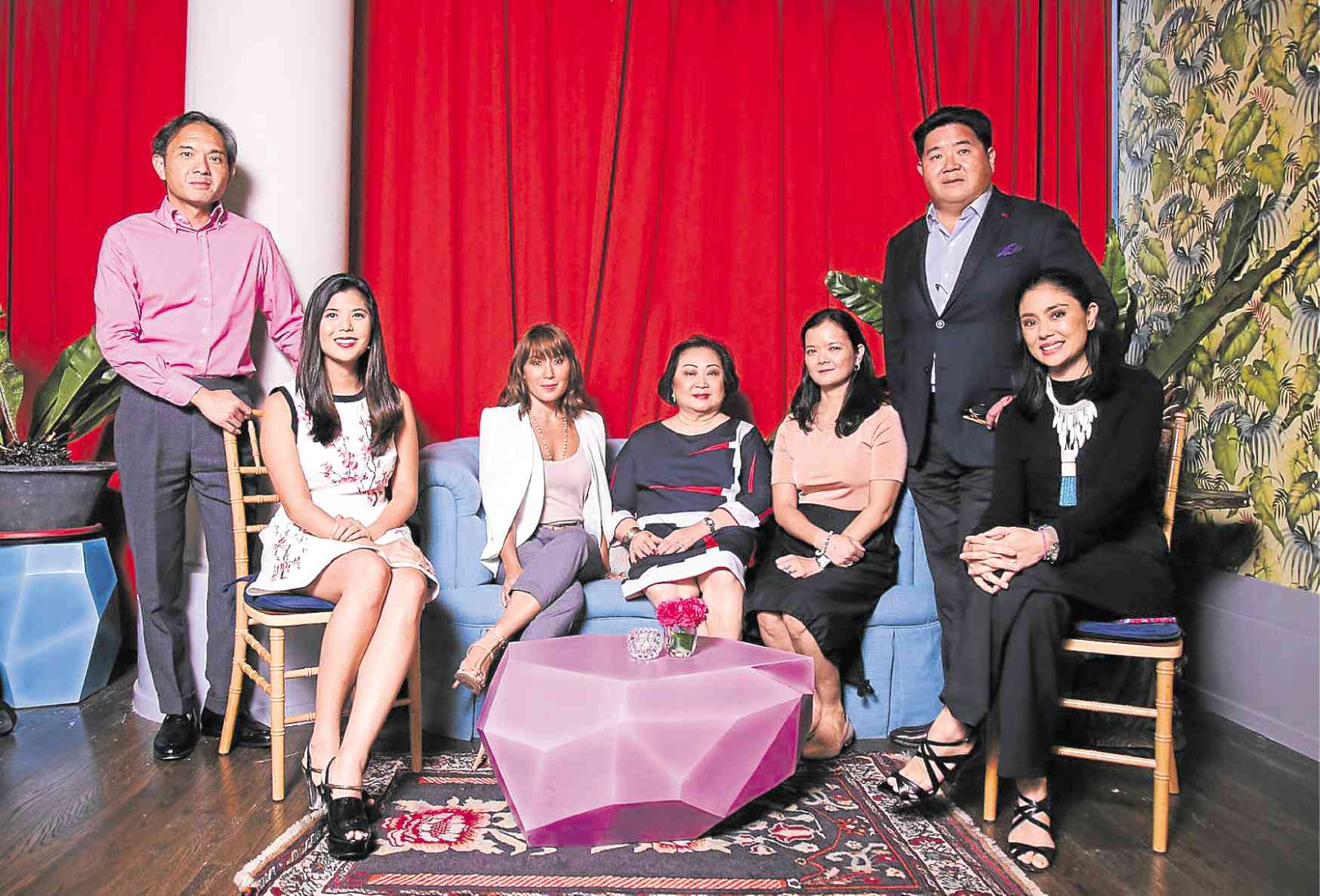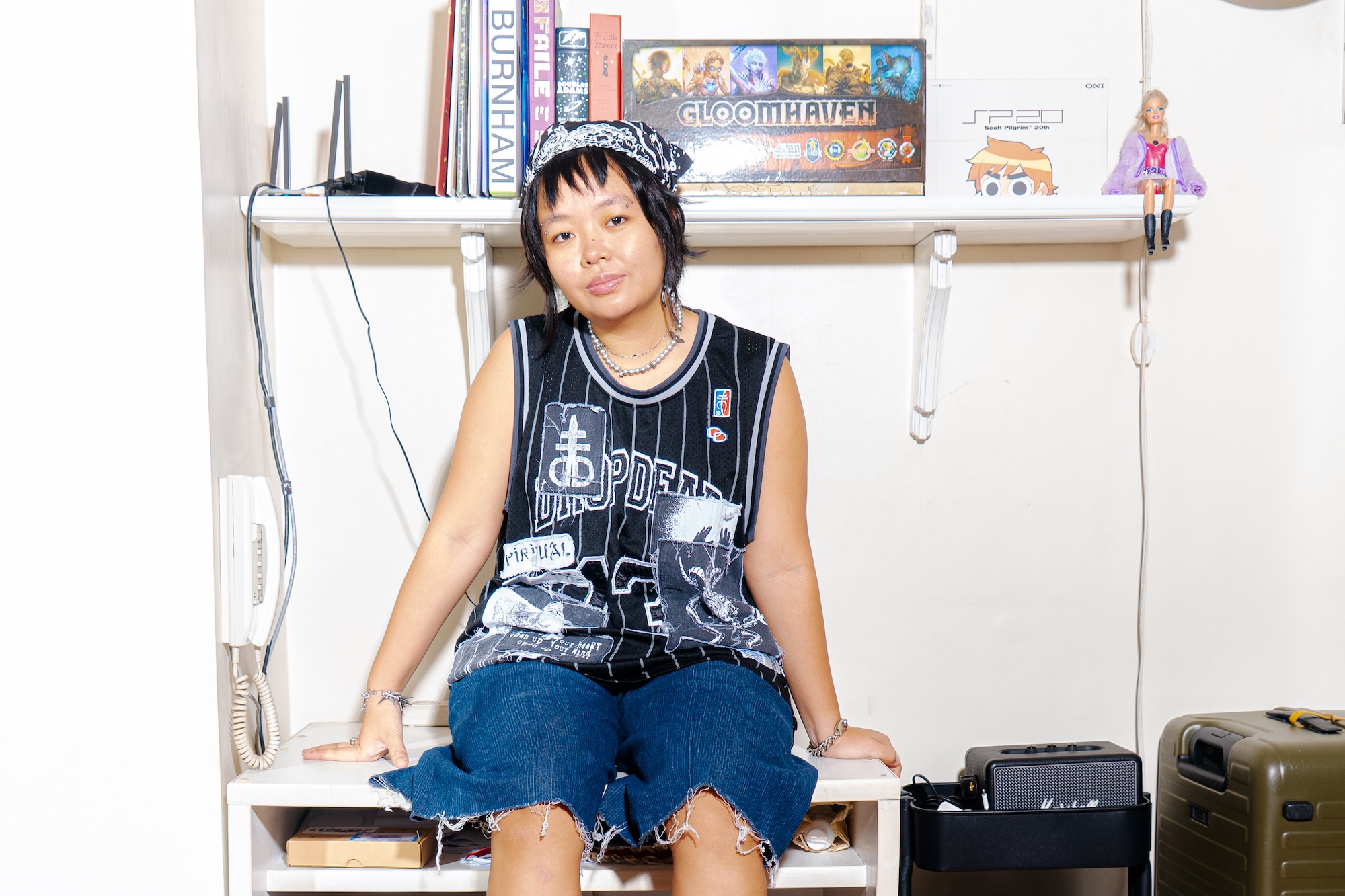
It’s really all service-oriented,” says Anton T. Huang, president of SSI Group, a subsidiary of the Rustan’s Group of Companies. “It’s not really creativity of product or merchandising per se, it’s really customer service. And that’s what Rustan’s is all about.”
“We’re always fighting,” Zenaida Tantoco, Rustan’s’ chair and CEO, says with a laugh, as she talks about the four generations of Tantocos working together in the family business founded by her parents, Bienvenido Sr. and Gliceria Tantoco, 65 years ago.
These remarks, made during Lifestyle’s roundtable interview with the Tantocos, came from representatives of two generations of the country’s foremost retail clan: the mother and her son.
Rustan’s, a name synonymous with luxury retail, has expanded to other businesses run by Tantoco and her five siblings—Rico, Menchu Lopez, Merle Pineda, Marilen, and Maritess Enriquez—and their respective children, plus one grandchild. (SSI alone has more than 100 brands.)
The Tantoco clan is like any other Filipino family in business—there’s camaraderie and love, but they also have their share of conflicts.
It’s the sense of family that gets them past their differences. Tantoco and her siblings have stood united through the decades, and continue to grow the business under the guiding presence of their widowed father, now 96.
As the Tantocos marked Rustan’s’ 65th year, members of the family, representing various subsidiaries of the corporation, sat down with Lifestyle to reflect on the changes affecting retail—e-commerce, elusive millennial market, growing competition—and how they’re adapting to the rapid changes.
“If you think back to what Lola Glecy was all about, as a retailer, it was the kind of service that she would provide,” says Huang.

As members of the next generation step up, what’s imperative is that they’re taught the Rustan’s DNA.
“It’s living up to the legacy that Lolo and Lola built,” says Noey T. Lopez, president of Rustan Coffee Corp., which runs the Starbucks chain. “We owe it to them. They built this, and we feel so blessed. It would be a shame for us to not be united.”
His sister, Maricar L. Tiangco, echoes his thoughts. “We saw how hard they worked to make Rustan’s what it is now. That’s one of the reasons we’re able to work through whatever conflicts: To keep Lolo and Lola’s legacy alive.”
Tiangco, VP for merchandising of Rustan Design Specialists (Flower Shop), adds, “Rustan’s has given us so much. None of us would be enjoying what we have without what Lolo and Lola worked so hard for.”
Stiff competition
What are the challenges that face Rustan’s today?
Zenaida Rustica Tantoco: There are so many challenges today, it’s unbelievable. All the malls are going up, the competition is so stiff. There’s the changing customer trend, like the millennials. They have their own world that’s not so in sync with what Rustan’s is all about.
But I always tell my managers, we may not catch the millennials at this age, but we catch them when they get married. As soon as they think of getting engaged, they go to the store, then they have their growing family and we catch them there. It’s not easy, I must admit.
What do you think is making it tougher to get the millennials?
Zenaida: They do online shopping, and also the price. Of course, there are also high-end spending millennials. But I think they like to shop online, and we are not yet online. The rest of our companies are.
Anton Tantoco Huang: To put it bluntly, the biggest challenge is to make sure that we remain relevant and don’t turn obsolete. There’s a lot of disruption around the world, mainly brought about by technology, new consumer behavior, not only shopping habits. You in media were first. The disruption came to your industry before ours. There are many media companies that have survived the disruption and reinvented themselves. For us, every day, it’s a matter of focusing our efforts to remain relevant and avoid becoming obsolete.

(To Zenaida) Are there times when your mom crosses your mind, and you ask yourself what would she do if she were still around?
Zenaida: Very often. (Laughter) Especially when we were preparing the 65th anniversary. I’ve been talking to her, quite often, asking her to give us guidance, because it’s a changing environment.
Do you feel her answering you somehow?
Zenaida: Yes, when I make my choices. I feel that maybe she answers me because the choice is easier.
What traits of your mom do you think are still very useful today?
Zenaida: Her attitude toward customers, the good service that she always wanted to give, her way of inviting customers to “please handle our merchandise, you’ll love it.” Some would say, “Ahh don’t touch!”
(To Camille Yu Tantoco) As a millennial, do you have your inputs or ideas where Rustan’s is concerned?
Camille: I think online business would definitely be the future, especially now that land is running out, and there is less and less space to rent. Maybe five to 10 years from now, Rustan’s would definitely have an online business.
Anton: As mom said, e-commerce is a reality, something that we actually started a few years back. It’s the learnings on the SSI side that we’re sharing with Rustan’s Department Store, for them to launch their own platform. As what mom said, Lola was a retailer. And if you look at our learning from an e-commerce perspective, what is e-commerce today but better service for the customer—on demand, convenient, giving them choice, giving them the ability to return and exchange. It’s really all service-oriented. That’s the DNA of Rustan’s. So really, in terms of being successful in the e-commerce perspective, we have that DNA. It’s just really a matter of translating it.
We have the stores and the content. And it’s really making sure that we provide that same service, and make it seamless from an online to offline perspective and vice versa.
Expectations
Are there major learnings of SSI you can share, that you think are applicable to Rustan’s?
Anton: From a service perspective, the expectations are quite high. If you look at the market today, the people with spending power are the Baby Boomers and Gen X. The millennials are a growing market, they have spending power because they don’t necessarily save their money, they like to spend right away.
That’s perfectly fine, that’s changing consumer behavior. But consumption is still very much at the Gen X level, and that’s who we as a group have been catering to and continue to cater to.
We’re mindful of the millennials, and to transform ourselves to remain relevant to them, but at the end of the day, our main focus, our bread and butter, is still Gen X.
But do they shop online?
Anton: They do. If you look at the Facebook growth in terms of usage in the Philippines, it is very high with the Gen X, not so the millennials. They’re shopping online, and we are seeing that with our online operations already. And I’m sure that would translate to Rustan’s.
Rustan’s was the first to do, for example, bridal registry. We are the destination when it comes to gifting. And can you imagine, once Rustan’s provides the option to do bridal registry online, there are many other people we can tap. More than 65 percent of our sales online are outside Metro Manila.
So the online digital presence for SSI is not just marketing? It’s not just posting the products?
Anton: It’s equivalent to one store for us on a monthly basis for the brands we are selling online.
But it’s good that you still believe in traditional advertising.
Anton: I still do. Because the minute we advertise in the newspaper, you see the results the next day. And that’s Gen X and Baby Boomers who read. But at the same time, there is a market outside Metro Manila that now has the spending power. They just don’t have the ability to come to Metro Manila at any time so that’s, again, providing the service, the opportunity and the option.
And that’s what’s becoming an omni-channel retailer is all about.
Since the company is now run by different generations, on what points do you agree or disagree? (Laughter)
Zenaida: We’re always fighting. (Laughter)
I think you are talking mother and son. Do you resist the digital?
Zenaida: Not at all. I try to keep myself abreast of what’s happening on the market. We’re very open to each other.
And your staff is so young.
Zenaida: Yes, I’m overdue. I should really… (Laughter)
But the customers look for the veteran staff also.
Zenaida: Yes, that’s true with the sales people.
Anton: That’s both a challenge and a plus. The customers are very attached to certain sales people that you can’t let them go.
Still very good
Where is Rustan’s now on its 65th year? Good place?
Zenaida: I think so. It’s still our home, it is still very good. I think overall we are growing, our sales is growing every year. We can do better, but we are happy with our growth.
And how do you have synergy as a Rustan’s group? You’ve expanded.
Noey Tantoco Lopez: In retail, SSI and Rustan’s coordinate closely. But since we’re in a different business, we can contribute by doing more in terms of partnerships, promotions. For the 65th anniversary, we are doing a lot together as a group.
Maricar Lopez Tiangco: With Starbucks and SSI, my other brother Quito is in charge of store development. Quito and Anton talk a lot.
Anton: If you look at our group, the one unique thing is that we’ve remained solely focused on retail. Because as far as we are concerned, that’s really what we know. We know the market, we know our customers, and as such we have for over 65 years developed different retail operations that cater to these different customers. The individual members of the group are all focused on retail, catering to a market segment; they’re all leaders in their respective fields.
Is there an opportunity to coordinate more with one another? We continue to do so, like with real estate or site development, between Starbucks and some of the SSI operations. As Noey said, the celebration of the 65th anniversary is a testament that if you put us together as a group, it’s a very diverse portfolio that no one really can match.
How do you keep united? You’re one of the few families in business that remain so.
Zenaida: It’s not easy. (Laughter) We’re very close, us six children were born only one year apart, the first four. We were always brought on outings. Even now our own children practice that in their families.
Sunday lunches
Do you talk shop in family gatherings?
Zenaida: Always. I think that’s how Anton learned the ropes, because my mother would talk shop even during Sunday lunches.
Maricar: When my daughter was studying business management at Ateneo, the things they were talking about in her classes were so foreign to her classmates. But to her, it was so familiar because she would hear it often at family gatherings. Even with us cousins, and now even the fourth generation, it was the same. Camille can attest to that.
Camille, were you forced into the business?
Camille: No, I wasn’t forced. I actually tried working in other places, Unilever and Habitat For Humanity, and at first I thought I was more of a creative person and I didn’t know if retail was for me. But eventually when I worked for the family business, I really liked it, and I don’t think I’ll leave anytime soon.
What do you like most about it?
Camille: We all love to shop. Retail is fun on both the consumer side and the other side. You see what goes into it in terms of marketing, merchandising and choosing products, finding out customer behavior through the things they buy. Just making people happy by providing what they want is really rewarding.
And as retailers, we also help our employees. Rustan’s is one of the companies that doesn’t practice contractualization in the Philippines. Many of our employees have been with us since our company started and it’s nice to learn from their experiences.
Noey: I think it’s living up to the legacy that Lolo and Lola built. We owe it to them. It would be a shame for us to not be united.
Where will you bring Starbucks from here, already being a part of the Filipino lifestyle? How can you raise the bar?
Noey: There is also so much competition. We have to elevate, not just in coffee but also in snacking, across all levels of our business, in terms of the expertise of our people. We have all these beverages we’ll roll out, we have this new Nitro Cold Brew coffee.
Innovation is one thing. The fundamentals are the people, the store, the store environment. We have now 11 Starbucks Reserve stores. We’re going to open six more this year. We just opened our 318th store in Davao. And we’re gonna reach 400 by 2020, that’s the goal.
More than a niche
How about Sta. Elena? Are you happy with the niche you have?
Katrina Tantoco Lobregat: It’s more than a niche market. It cuts across different demographics with shared values. And also, the same kind of clientele the other companies in the group serve. We are quite satisfied now with how the market is evolving in terms of what they value. The idea of moving away from the city, finding peace away from the stresses city life brings, the importance of communing with nature and engaging in outdoor activities, but again in a luxurious environment. And I think it’s not a fad, so there’s room for growth.
Dina Arroyo Tantoco: The best part there for young families is the fun farm.
How else are you reaching the millennial market?
Anton: That’s still a work in progress. Even if we had the merchandise, going to the store is not their habit at this point, except probably for gifting. It’s really creating events. For example, Rustan’s The Beauty Source brings in a lot of millennials. We do have the beauty merchandise. From a fashion perspective, that’s still a work in progress. They buy less of fashion today.
Zenaida: They’re all in jeans, and denims last forever. (Laughter)
Anton: I was reading an article sent by Noey this morning, saying even formal office wear has gone down the drain. There’s a whole casualization. So fashion is less of a priority at this stage because millennials are buying beauty products and gadgets, because of their lifestyle. They don’t sleep…
But with the casualization, sneakers are being sold at a premium, with all the big designer brands rolling out sneakers. If you watched the Emmy’s, there were people in tuxedos with white rubber shoes.
How are you retooling merchandising?
Zenaida: We change our buyers.
Anton: If you look at Home, for example, we are noticing that the Baby Boomers are moving to apartments or condos. So that’s a lifestyle change. We’re making sure that we have more stuff for condominiums. And as Noey said, with the increased competition, there’s change in product offerings.
‘Ondoy’
Which decade has been most challenging for Rustan’s? What event in the last 65 years has had the most effect on your business?
Anton: I think it was the year “Ondoy” happened. For us, Christmas cannot not happen. That’s the reality of retail. That was a major catastrophe. It happened late in the year, and we couldn’t celebrate. It was a very tough year for us. What Mom likes to say internally is, the changes in consumer behavior are really a great opportunity for us, because they provide us new opportunities to come up with new formats, to try new merchandise, try new marketing activities.
What’s different with your family? You seem to work so well together. How do you keep the peace?
Zenaida: Ask them. (Laughter)
Maricar: The second generation has its own individual turf and company to run…
So there’s no power play?
Maricar: No.
No rivalry or jealousy?
Zenaida: No.
Anton: Conflicts are inevitable. It’s just fortunate that at the end of the day, the sense of family is instilled by Lolo and Lola in everyone and followed through by Mom and her siblings, so we’ve managed to work through those conflicts. I believe this goes for the third generation, and I hope would eventually go down to the fourth generation, as well.
There’s a shared vision as far as what the Rustan’s Group stands for, in terms of making sure that we cater to the lifestyle-oriented customer, the customer service we’re expected to provide as a brand, and the level of merchandising that we’re known to provide and uphold.
Maricar: Like Noey said, the legacy of Lolo and Lola. We’ve seen how hard they worked to make Rustan’s what it is now. That’s one of the reasons we’re able to work through whatever conflicts.
Tech-savvy
How do you train the fourth generation?
Noey: They teach us. (Laughter)
Anton: I agree with Noey. They have a different way of doing things. Our way is more linked to the second generation.
How do you think will they teach you?
Noey: They are more tech-savvy. They follow their passion. They don’t just do things because they have to. The brands they like have to be authentic and something they believe in. They won’t follow just because this person said so. They feel they can do anything. They’re driven. They have the resources and tools.
Dina: I think the important thing is that we teach them what the Rustan’s DNA is.
Maricar: Yes, the values.
Do you give them a free hand to do things?
Anton: As far as the fourth generation is concerned, there’s only Camille for now. So she’s the experiment. (Laughter)
How difficult or easy was it working for the older generation?
Maricar: I’ve only worked for my mom (Menchu Tantoco Lopez) and that’s food, and now the Rustan’s Flower Shop. I get along really well with my mom. Of course, there are times that we don’t see eye to eye, so I just have to explain.
Katrina: Same with me. I worked with Ninang Nedy for a while, but I had to focus on Sta. Elena. I learned a lot. Rustan’s is, as what my mom says, the university of life. And you really go through a lot of growth. That prepared me for what I had to take on at Sta. Elena, and for that I’m so grateful. The value of education from the Rustan’s way is immeasurable.
Which category of retail do you think is really going up?
Anton: Right now, beauty and food. The original business plan for Starbucks was 50 stores in 10 years. Now it’s 318.
Noey: And I still think we could’ve done more.
Anton: And even Salad Stop is doing incredibly well. I’m the only one holding back their expansion. So F&B and beauty is very strong at this time.
The mall expansion is quite incredible. Does that add to the pressure on you?
Noey: It’s simpler for us. There are so many other players, not just the big guys, and there are also independents. We have to be very selective so that we don’t hurt ourselves.
Anton: We were forewarned by other countries that part of emerging markets is a consumption boom. And a consumption boom is followed by a real estate build-out. To service that consumption boom, what always happens is that the real estate build-out is too fast, too much too fast, and cannibalization happens. I think we are seeing that now. There are many different malls opening within the same catchment area and because of the poor public infrastructure, it leads to traffic. It’s very difficult for people to move around.
Then there’s the advent of online shopping for convenience. It has happened in other emerging markets, in Indonesia, in Malaysia, in developing markets in Europe. We just have to be very selective.











































